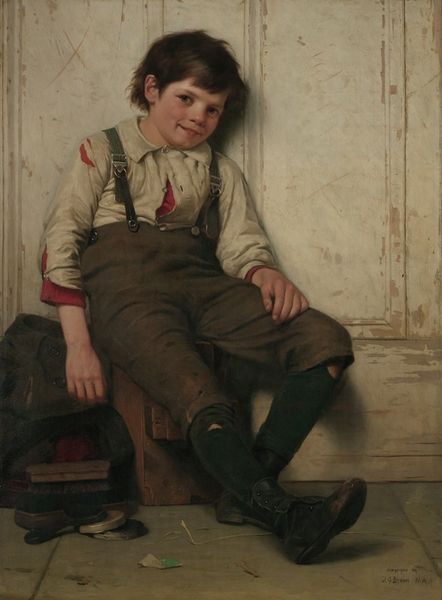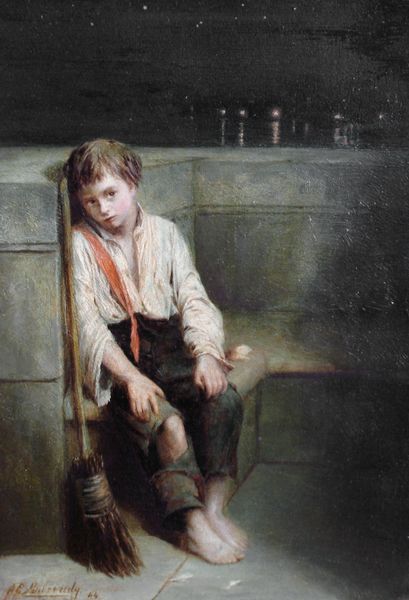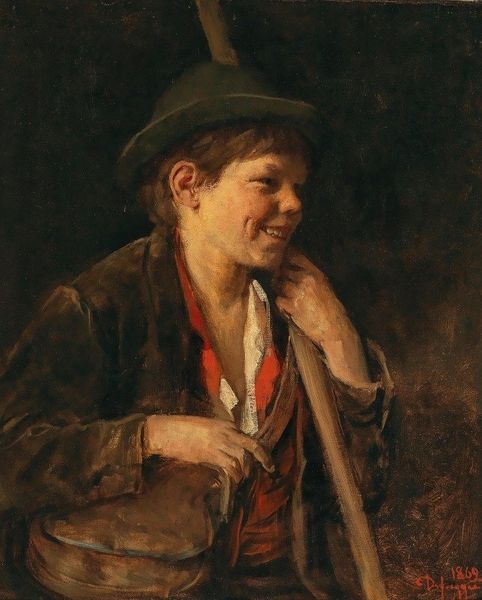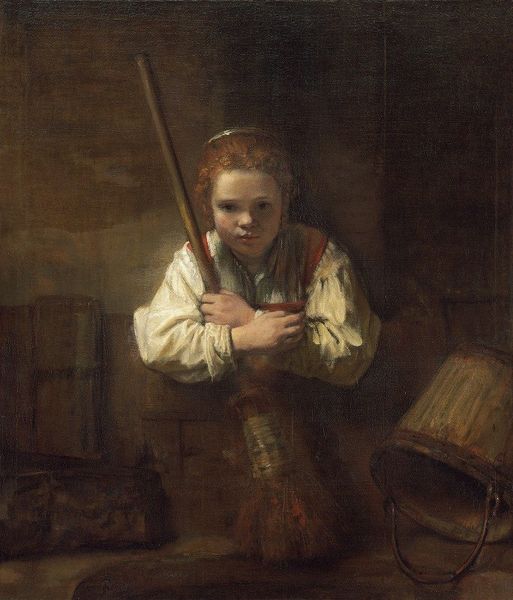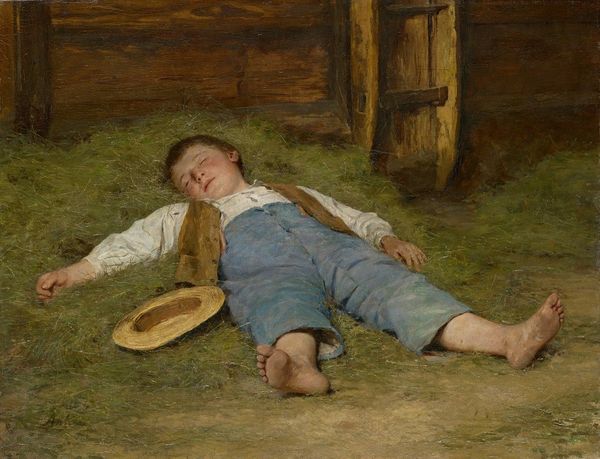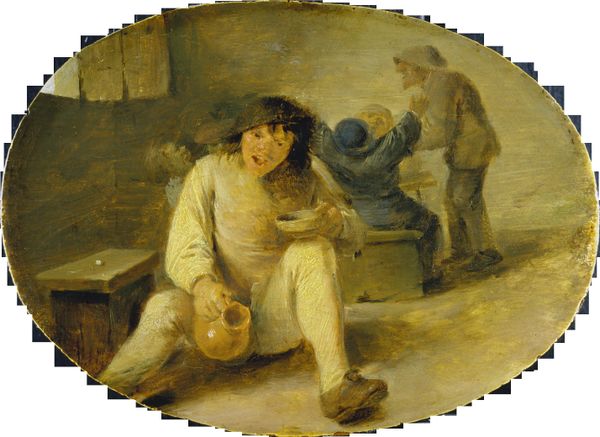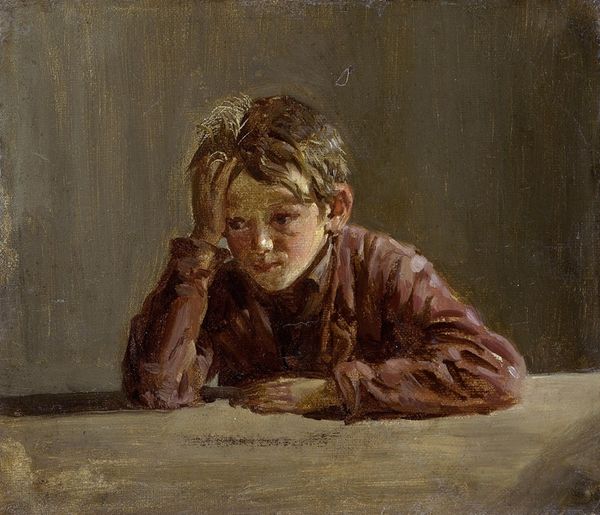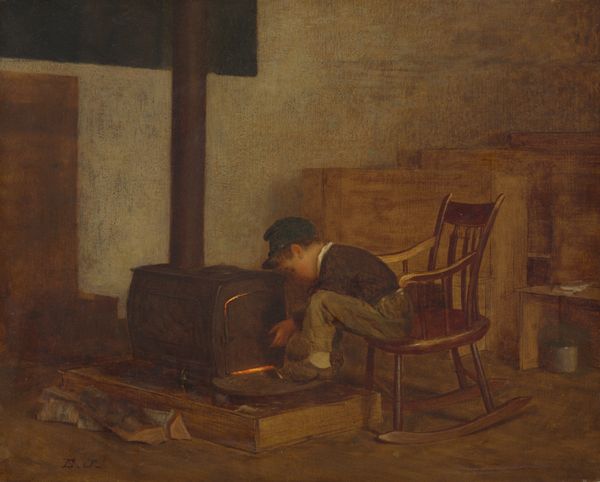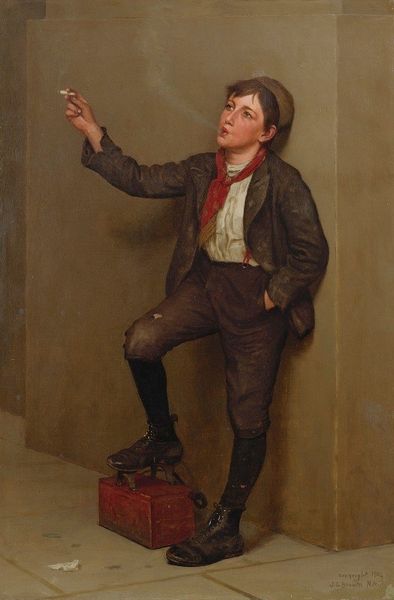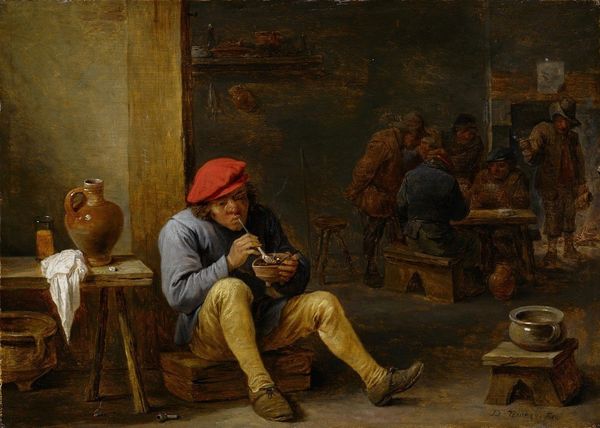
Copyright: Public Domain: Artvee
Editor: John George Brown's painting, "This Corner Don't Pay," created in 1875, presents us with a poignant image. The boy’s posture, head in his hand, radiates dejection. What do you see in this piece, considering its title? Curator: The title is key. It immediately infuses the scene with a socio-economic reality. Look at the discarded blacking brushes beside him; they speak to a failed venture, an unsuccessful attempt at work. The boy embodies vulnerability, but also perhaps a latent resilience. Brown is capturing a specific moment in the life of urban, working-class children. Does the darkness of the backdrop strike you? Editor: It does. It really accentuates the boy's isolation. Is there any deeper symbolism at play here? Curator: Absolutely. The stark contrast between the darkness and the muted, earthy tones of the boy's clothing speaks to the harsh realities these children faced. The setting might well symbolize an uncaring world, a societal backdrop against which individual struggles play out. Think about the weight this single image would carry. Is he truly alone or does he represent a larger social truth? Editor: I never thought about the darkness having such symbolic meaning. The boy is not simply a subject but an icon. Curator: Precisely. He's a carefully constructed symbol. Brown asks us to reflect on what societal factors contribute to such visible displays of childhood weariness. Art can become an avenue of public conscience. Editor: It’s so much more than just a portrait; it's a statement about a particular time and place.
Comments
No comments
Be the first to comment and join the conversation on the ultimate creative platform.
